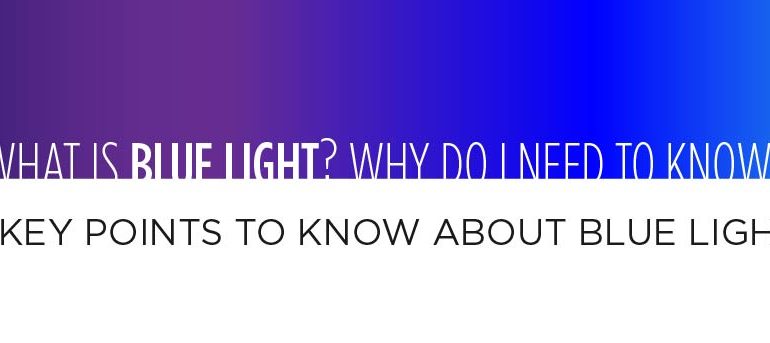The new buzz word you’ve probably already heard about is blue light. But what is it? Visible and invisible light is always all around us. Whether we are outside in direct sun, turn on a wall switch indoors or spend hours on a digital device like a tablet, phone or computer… light (including blue light) is present and can have a range of effects on our bodies function.
Most people are aware that sunlight contains visible light rays and also invisible ultraviolet rays that can tan or even badly burn the skin. But what many don’t know is that the visible light emitted by the sun comprises a range of different-colored light rays that contain different amounts of energy.
White light is made up of all colors in the spectrum. Each color of light has a corresponding wave length. For example, Red light waves are longer and therefore have less energy. Blue light waves are shorter and emit a higher amount of energy. Rays beyond the Red end of the spectrum are also invisible called infrared. They are warming, but invisible, like the lamps you see above your food in restaurants. They have an added red filter so that we can see that they are on. On the other end of the spectrum, beyond Blue light, is ultraviolet light. These wavelengths are the shortest, have the most amount of energy and are more dangerous — just think about how even on a cloudy day, the UV rays from the sun can still cause substantial damage to skin. Blue light does have benefits as well and the following is a list of things to know:
7 Things to Know About Blue Light:
- Blue Light is everywhere: phones, tablets, computers, the SUN. Be aware of how much time you spend on these devices and remember that doctors still don’t know what the lasting effects might be of too much exposure to digital devices.
- HEV (blue light) rays make the sky look blue: The short-wavelength, high-energy light rays on the blue end of the visible light spectrum scatter more easily than other visible light rays when they strike air and water molecules in the atmosphere. The higher degree of scattering of these rays is what makes a cloudless sky look blue.
- The EYE is not very good at blocking blue light: While the anterior structures of the eye (cornea and lens) are excellent at blocking UV light from getting to your retina – sunglasses are needed to protect the outer structure of the eye. These same parts of the eye are not good at blocking blue light. Almost all HEV light that goes through your cornea reaches your retina.
- Blue Light exposure may increase your risk of Macular Degeneration: Because the blue light is not blocked, doctors are seeing changes in the eye that look similar to those of AMD and they are concerned that more exposure to HEV will increase the onset of AMD.
- More Blue Light = More Eye Strain: Because short-wavelength, high energy blue light scatters more easily than other visible light, it is not as easily focused. When you’re looking at computer screens and other digital devices that emit significant amounts of blue light, this unfocused visual “noise” reduces contrast and can contribute to digital eye strain.
- Blue Light Protection may be more important after Cataract Surgery: As we age, so does the lens inside our eye and will slightly “yellow” over time. When this lens is taken out or replaced during surgery, we lose all of that natural blue blocking ability.
- Not all Blue Light is bad: Some exposure is good for our health. Research has shown that high-energy visible light boosts alertness, helps memory and cognitive function and elevates mood. Also, blue light is very important in regulating circadian rhythm — the body’s natural wakefulness and sleep cycle. Exposure to blue light during daytime hours helps maintain a healthful circadian rhythm. But too much blue light late at night (reading a novel on a tablet computer or e-reader at bedtime, for example) can disrupt this cycle, potentially causing sleepless nights and daytime fatigue. Glasses with special Anti-Reflective Treatment called Re-Charge will block substantially.
Come in and talk to our Opticians to make sure your next pair of glasses will have blue light protection. And if you don’t have a current glasses prescription you can get one of those here.
Did you like this article? You also might find this interesting.
